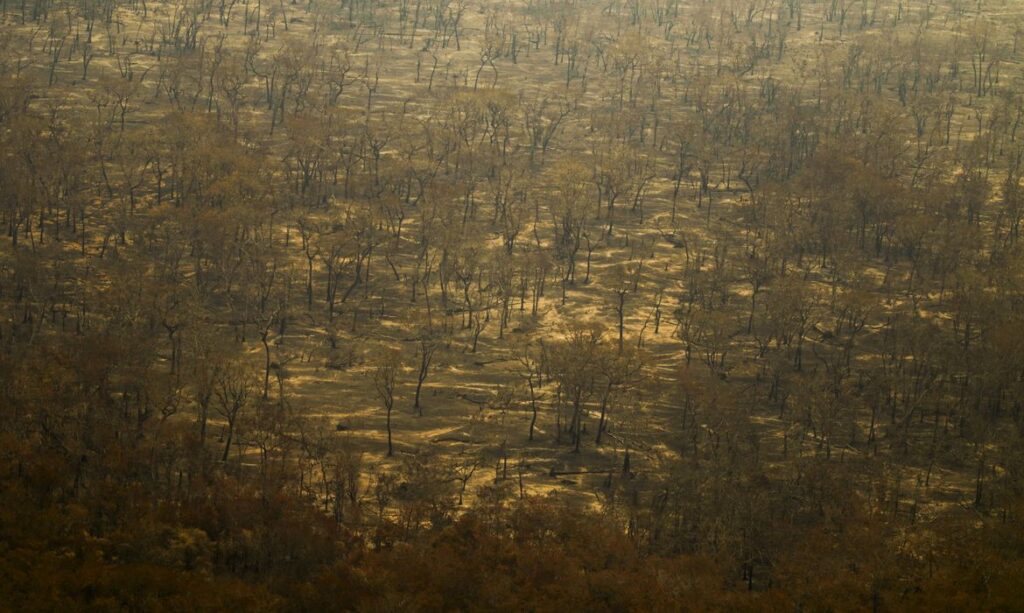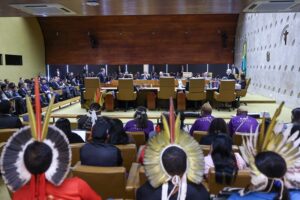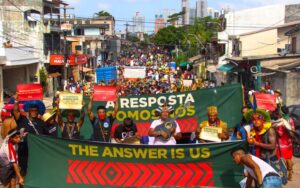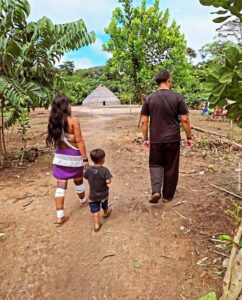The data was presented by Coiab and Opi during the biodiversity conference in Cali
In 25 years of recording data on fires in Brazil, 2024 was the year with the highest number of hotspots in Indigenous Lands and Conservation Units where there are isolated indigenous groups. From January to September, there were 10,037 fire outbreaks in these territories, 12.35% of all fires in the historical series. The data was presented at COP 16 in Cali (Colombia) by the Coordination of Indigenous Organisations of the Brazilian Amazon (Coiab) and the Observatory for the Human Rights of Isolated and Recently Contacted Indigenous Peoples (Opi).
The report presented during the day dedicated to isolated and recently contacted peoples at COP 16 is the result of information from Opi's platform Mapi (Monitoring Threats to Isolated Indigenous Peoples), a product of the cooperation between Coiab and Opi, with support from Opan (Operação Amazônia Nativa) and due to be officially launched in 2024. Data produced by Coiab's Indigenous Territorial Monitoring Management on the severe drought in the Amazon biome was also taken into account.
For the organisations, the uncontrolled advance of fires has affected the entire South American continent, with particular intensity in Brazil, Bolivia and Paraguay. These countries are home to the Amazon and Gran Chaco biomes, where most of the world's isolated peoples live. The fires are related to the expansion of agribusiness, logging and mining, activities which also involve land grabbing. And it has been aggravated by extreme weather conditions.
According to the report, this situation “has extremely serious consequences for the sustainability of socio-ecological systems”, and fire is an important factor threatening socio-biodiversity, the main theme of COP 16, the United Nations Conference on Biological Biodiversity, of which indigenous peoples, quilombolas and traditional communities are the greatest protectors. The event took place in Cali, Colombia, between October 21 and November 1.
Among the territories with a confirmed presence of isolated peoples, the most affected over the entire period between 1999 and 2024 (between January and September) were the Indigenous Lands Araribóia in Maranhão state, Massaco, Tanaru and Uru-Eu-Wau-Wau in Rondônia state, and Piripkura in Mato Grosso state. The highest fire density - an indicator that relates the number of outbreaks to the size of the territory observed - was found in the Araribóia territory.
In the Piripkura Indigenous Land, home to only three survivors from a massacre perpetrated 40 years ago, the fire is probably being started by invaders and the territory is only protected by an order restricting use, with no progress made in the demarcation process. In the Massaco Indigenous Land, the first in the country to be demarcated exclusively to protect indigenous groups in isolation, the density of fires is also a cause for concern, because the extreme climate conditions may be jeopardizing the indigenous people's traditional use of fire as an agricultural technique.
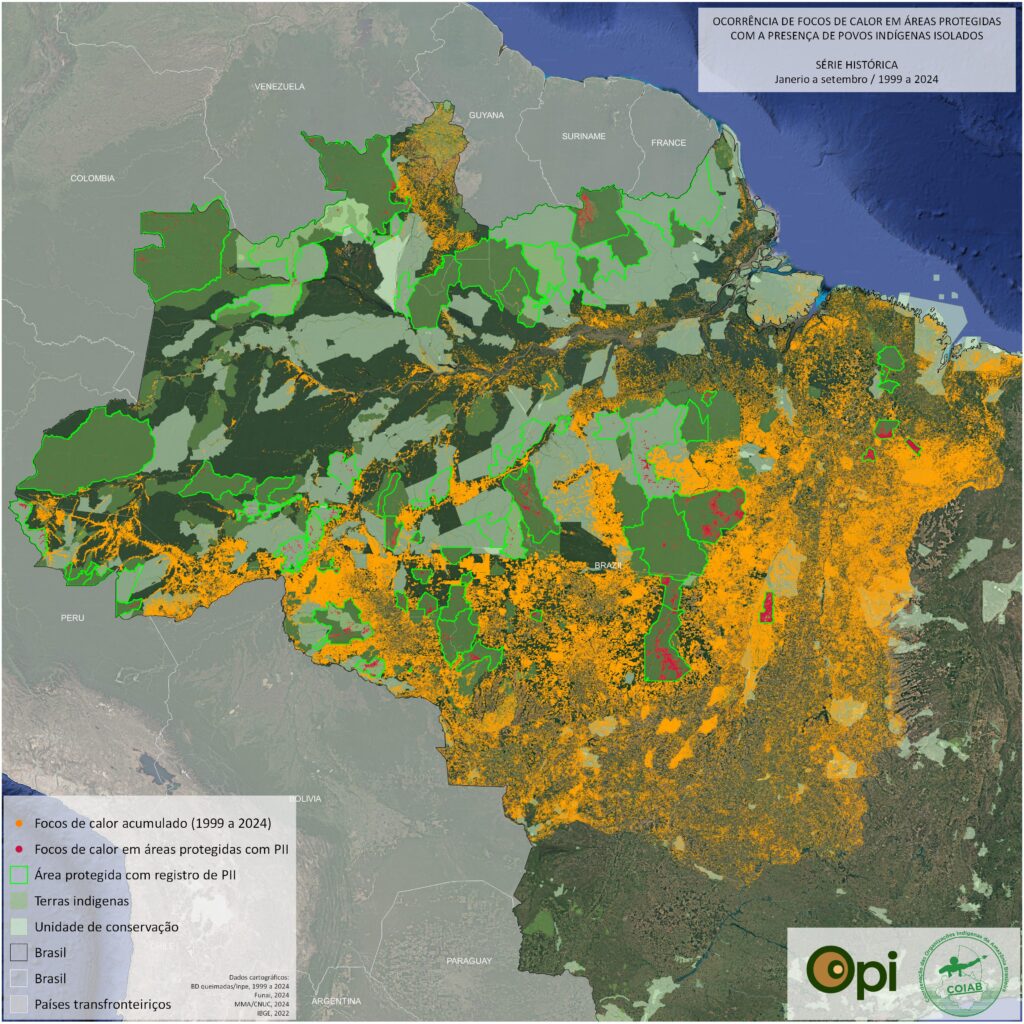
The combination of the most severe drought in 40 years and forest degradation caused by invaders may be making traditional fire management difficult in all cases. According to the study “Amazonia on the brink of collapse”, recently launched by Coiab, at least 42 Amazonian indigenous territories were devastated by extreme drought in 2024.
“Associated with and enhanced by these extreme drought conditions, the uncontrolled advance of fires in Indigenous Lands has destroyed hunting, gathering and cultivation areas essential for the physical and cultural survival of various indigenous peoples, threatening their habitats and, especially, their health and food security. The devastation related to uncontrolled burning poses an even more serious threat to isolated indigenous peoples, who depend exclusively on the ecosystems in which they live to maintain their way of life. In addition to jeopardizing their territories, the increase in fires can cause forced displacement, exposing these groups to unwanted contacts, conflicts and epidemics,” says the report presented in Cali.
The document also looked at territories with records of the presence of isolated indigenous groups which are still unconfirmed by the Brazilian state. For Coiab and Opi, the lack of progress in qualifying information on these groups contributes to the vulnerability of their territories. The Cana Brava/Guajajara and Krikati Indigenous Lands in Maranhão state, the Inãwébohona in Tocantins state and the Bom Futuro National Forest in Rondônia state are at the top of the list of hotspots and are all areas where the presence of isolated groups has yet to be confirmed.
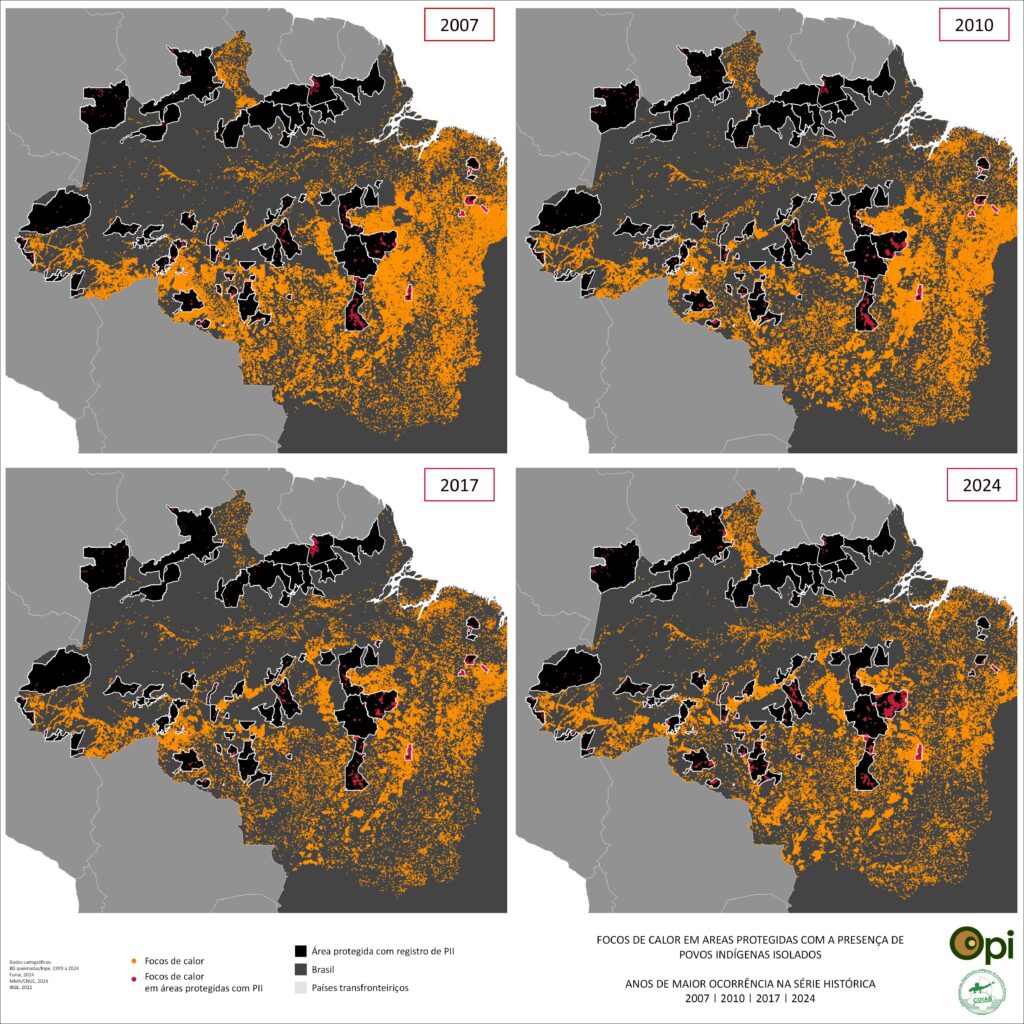
The document lists five recommendations to prevent fire from threatening isolated peoples' territories again in 2025. They are:
1. Supporting local firefighters and the use of more effective technologies to combat and monitor fire situations;
2. Implementation of rigorous inspection strategies to prevent invasions and remove invaders, essential to preserve the lives of isolated indigenous peoples and their territories, by monitoring and demanding the implementation of effective public policies, as has been determined by the Federal Supreme Court (STF) in the Claims of Non Compliance with Fundamental Precept (ADPFs) 709 and 991;
3. More rapid demarcation of territories that for long periods are only protected by orders of Restriction of Use;
4. The speeding up and qualification of studies into the records that are awaiting confirmation;
5. Continued support for indigenous, governmental and non-governmental organisations that are crucial to facing these challenges and guaranteeing the protection of isolated communities and their ancestral lands.
Read the full report

